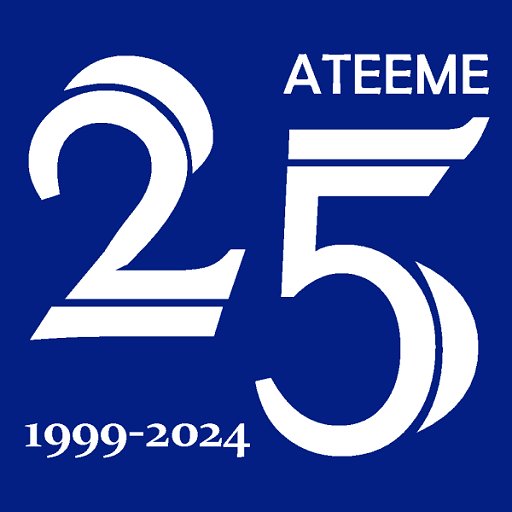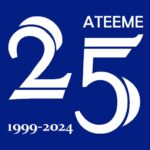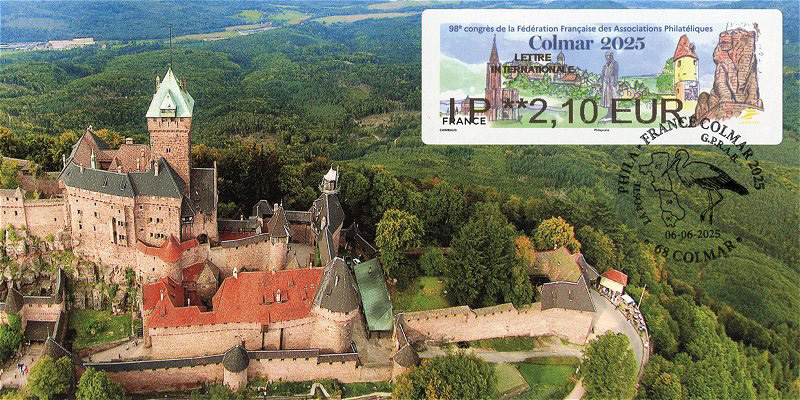Fifty years have passed since the Fédération Française des Associations Philatéliques (FFAP) held its 47th annual congress in 1974 in Colmar, organised by the Société Philatélique de Colmar. Many things have changed in these 50 years; philately has not aged well and has not been the main hobby for many over these years. Clubs and associations have disappeared due to lack of members, and it is almost impossible to attract new collectors into the hobby. Even so, France remains one of the few countries in Europe capable of organising an annual philatelic event on the scale of the PHILA-FRANCE, largely thanks to the enormous work done by the FFAP, in close collaboration with La Poste, l’Association pour le développement de la philatélie (Adphile) and the CNEP.
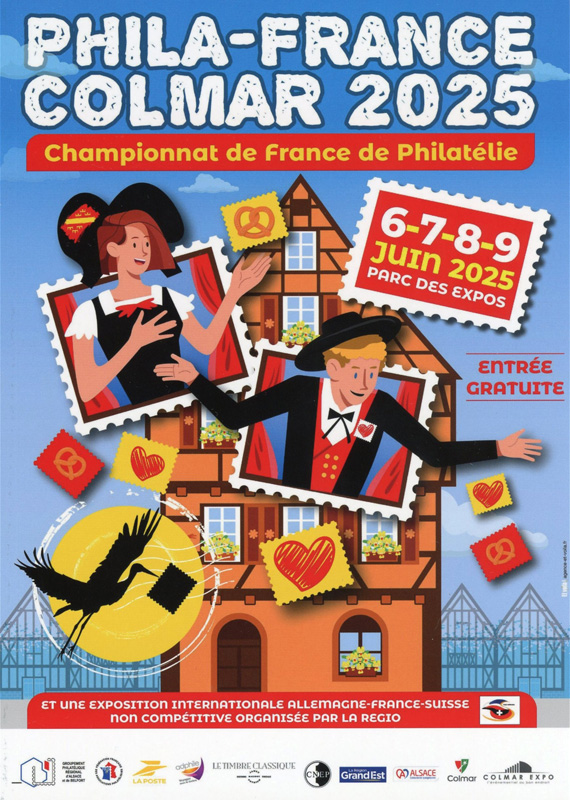
So, fifty years later, the FFAP has returned to Colmar for its 98th annual congress. And, as in previous years, the congress was held during PHILA-FRANCE, the major annual event that brings together the national philatelic championship, a major commercial fair and the attendance of various specialised philatelic associations.
PHILA-FRANCE 2025 was organised by the Groupement philatélique régional Alsace-Belfort, which brings together 23 philatelic associations from this region in north-eastern France, bordering Germany and Switzerland.
Since 2004, this event has been held in Paris every alternate even-numbered years, and is known as PARIS-PHILEX, and in the odd-numbered years in another city chosen by the federation and known as PHILA-FRANCE. Cities which have hosted this major philatelic event have been Nancy (2005), Poitiers (2007), Tarbes (2009), Metz (2011), Amiens (2013), Mâcon (2015), Cholet (2017), Montpellier (2019), Valenciennes (2021) & Chalon-sur-Saône (2023 – article); all events were commemorated with various ATM issues and these have been reviewed in articles published on this and our earlier website, and in various editions of VARIABLE.
A large event like this also requires a large exhibition area, not always available in city centres ideally to make it easy for local visitors. This was the case, with PHILA-FRANCE 2025 which occupied two large halls of the Colmar Expo, a congress and exhibition centre north of Colmar, not easily accessible by public transport.
During the event, the organisers prepared a number of activities and entertainment to attract visitors and it is worth pointing out the wonderful diorama exhibition “Revivez la France”.

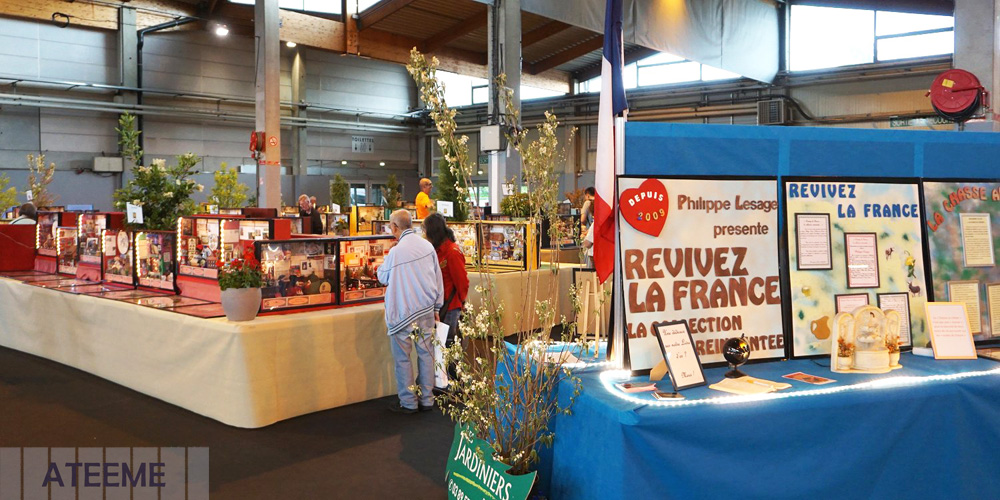
Although not related to our field of study, PHILA-FRANCE 2025 had Brazil as the guest of honour. The Federação Brasileira de Filatelia participated by sending several collections and in addition Correios de Brasil released personalised stamp sheets and a special postmark dedicated to this philatelic event, both illustrated with the white stork, symbol of the region.
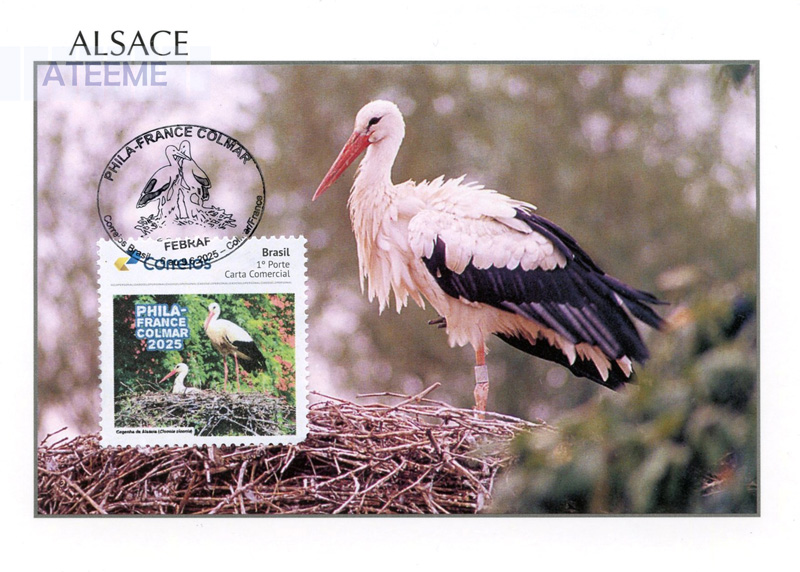
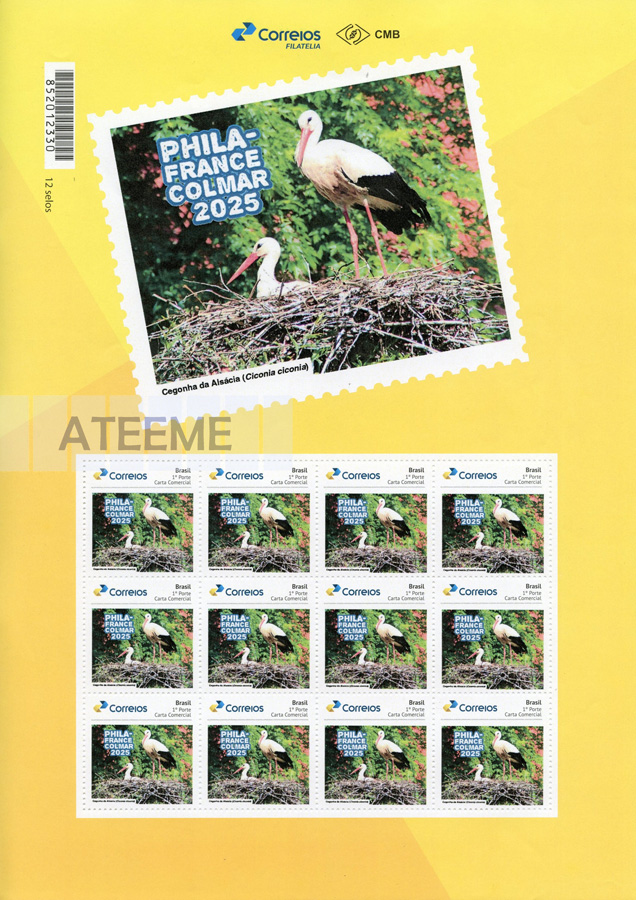
As in previous PHILA-FRANCE events, Philaposte released a stamp dedicated to the city hosting the event and a commemorative LISA issue, as well as several special postmarks. For its part, the FFAP produced its annual block/mini sheet including a personalized stamp.
A vignette LISA dedicated to this city had been released in 2010, featuring the Petite Venise and the Fontaine de l’Almiral Bruat, on the occasion of the Salon Philatélique de Printemps (see article and VARIABLE 17).
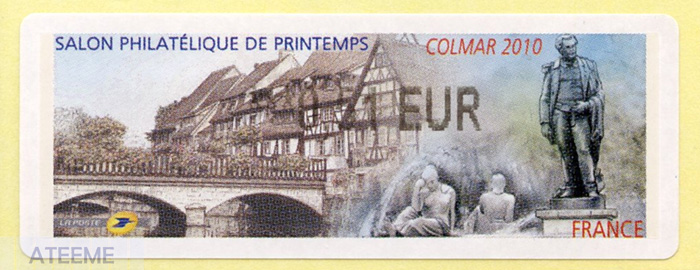
The “Colmar” stamp with the usual attached vignette with no value commemorating the 98th F.F.A.P. congress, and the LISA issue are designs by Sandrine Chimbaud. The stamp shows the cathédrale Saint-Martin and the traditional “maisons à colombages” or half-timbered houses of the region. The vignette depicts three Alsatian specialities: the kugelhopf or sweet bread, the bretzel, and the mannele, a brioche in the shape of a little man.
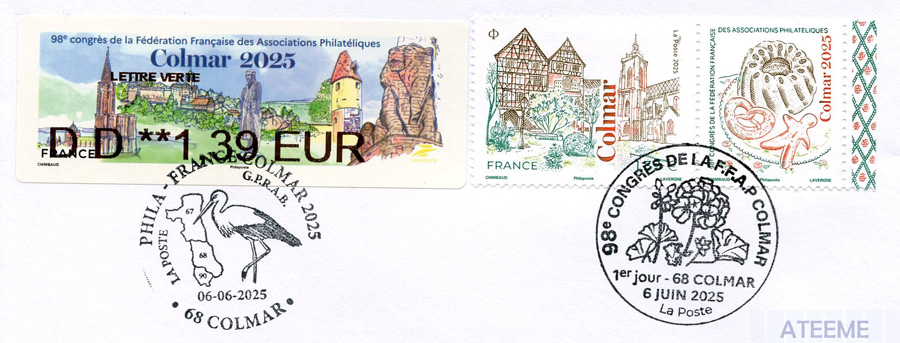
At the request of the organisers, the Groupement philatélique régional Alsace-Belfort, the LISA design represents the three departments, in the Alsace region and the Territoire de Belfort. The postmark “PHILA-FRANCE COLMAR 2025” (top left and maximum cards below) is particularly appropriate to this issue, and depicts the map of the three departments and the white stork.
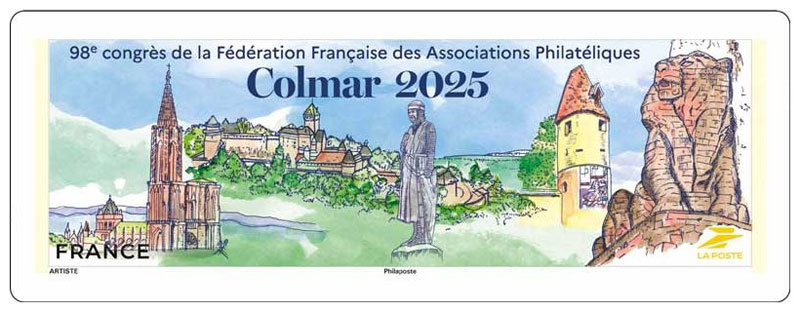
The LISA design is composed of the region’s five main buildings or monuments; from left to right, Strasbourg Cathedral, the castle of Haut-Koenigsbourg, the statue of Jean Roesselmann in Colmar, the Bollwerk tower in Mulhouse, and the Lion of Belfort.
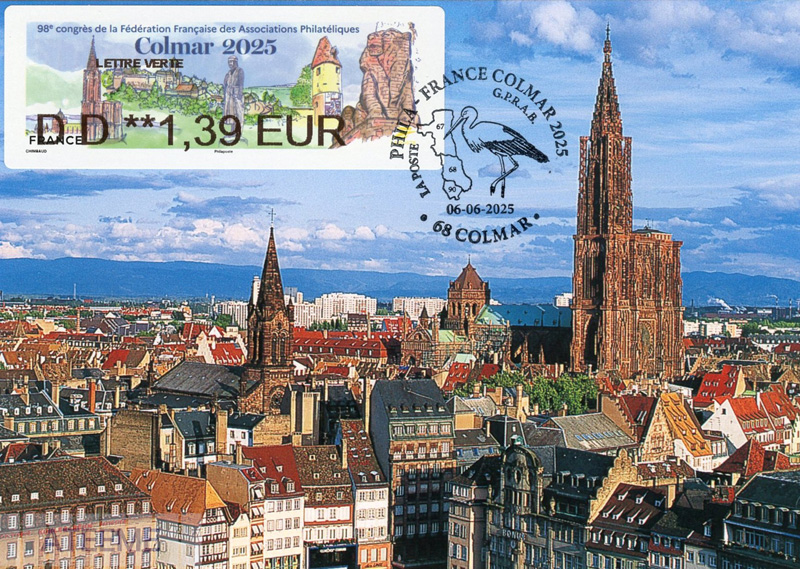
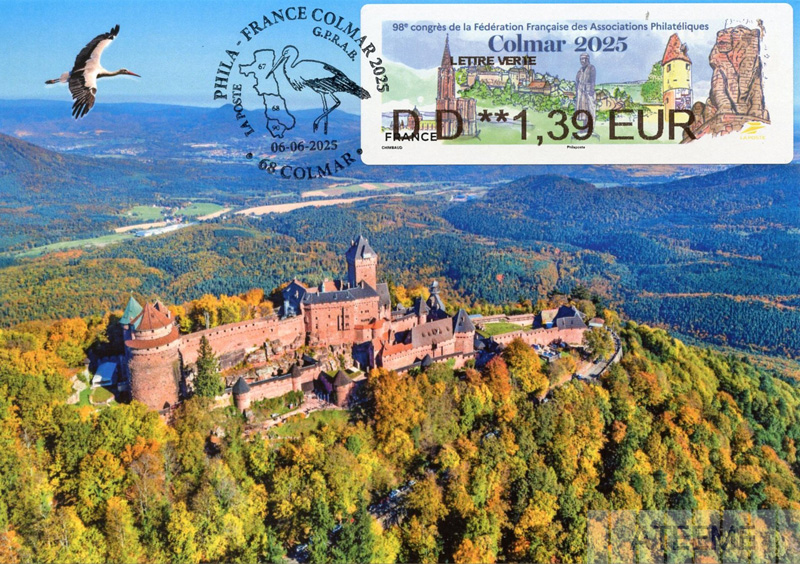
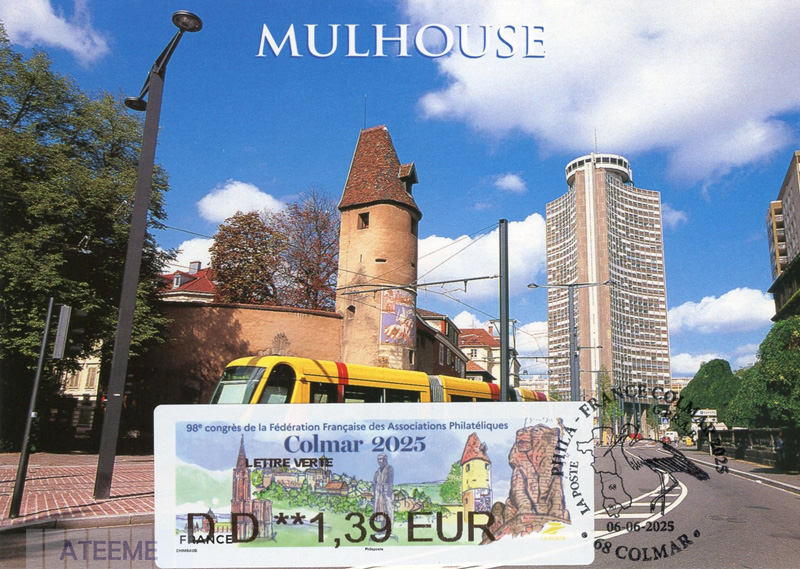
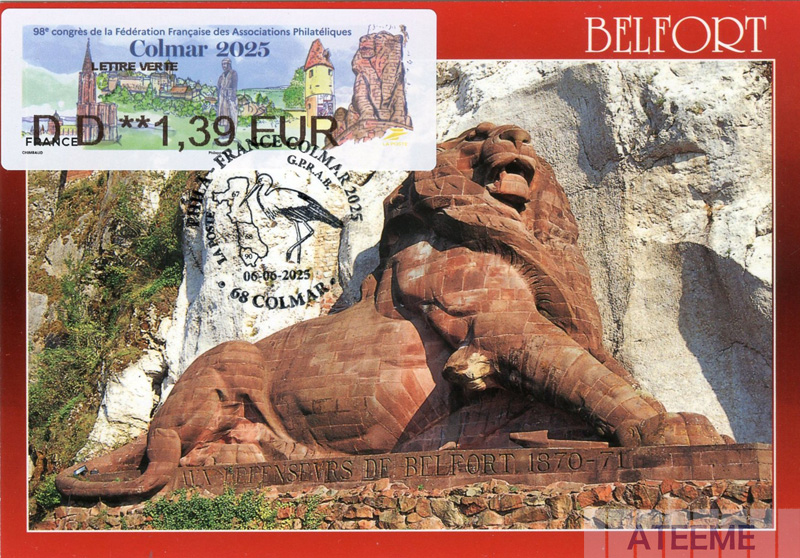
The Fontaine Roesselmann (the Roesselmann Fountain), inaugurated in 1888, is “crowned” by a bronze statue of Marshal Jean Roesselmann, who died in 1262 defending the independence of the city of Colmar which was threatened by the supporters of the Bishop of Strasbourg. The statue is the work of Frédéric Auguste Bartholdi, a sculptor known worldwide as the author of the Statue of Liberty in New York and the monumental Lion of Belfort, as well as the sculptures of the Fontaine de l’Amiral Bruat depicted on the right of the LISA released in 2010.
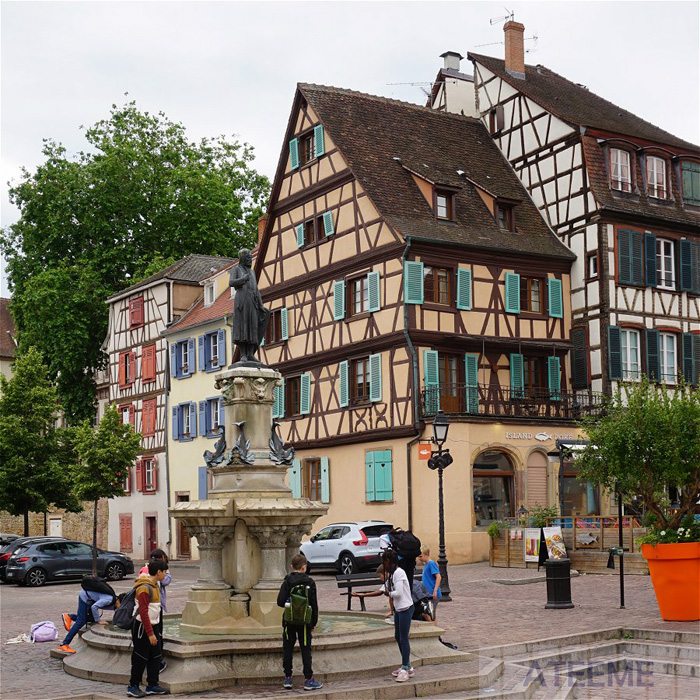
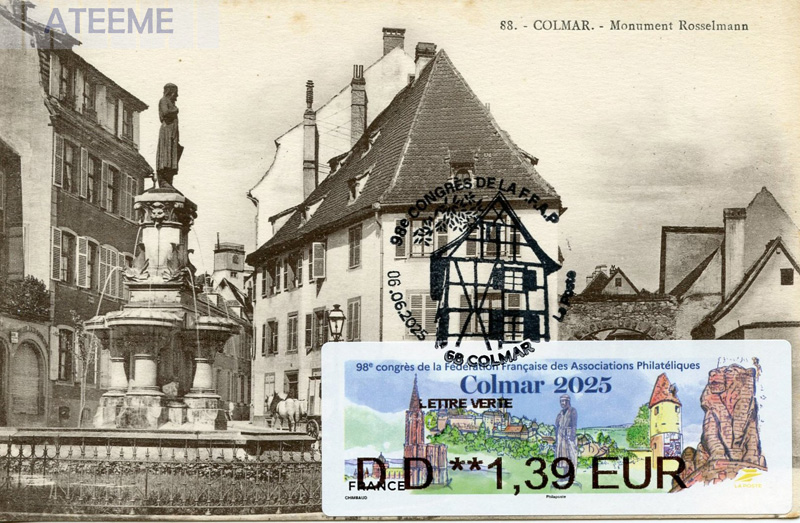
The LISA was available from the two IER NABANCO postal kiosks set up on the large La Poste stand, which had been moved for the exhibition from the main Colmar Champ de Mars post office. Both machines had been conveniently prepared with the “philatelic” software programme, which limits the purchase options, but eliminates the printing of the annoying Datamatrix code and the La Poste logo on the issued stamps.

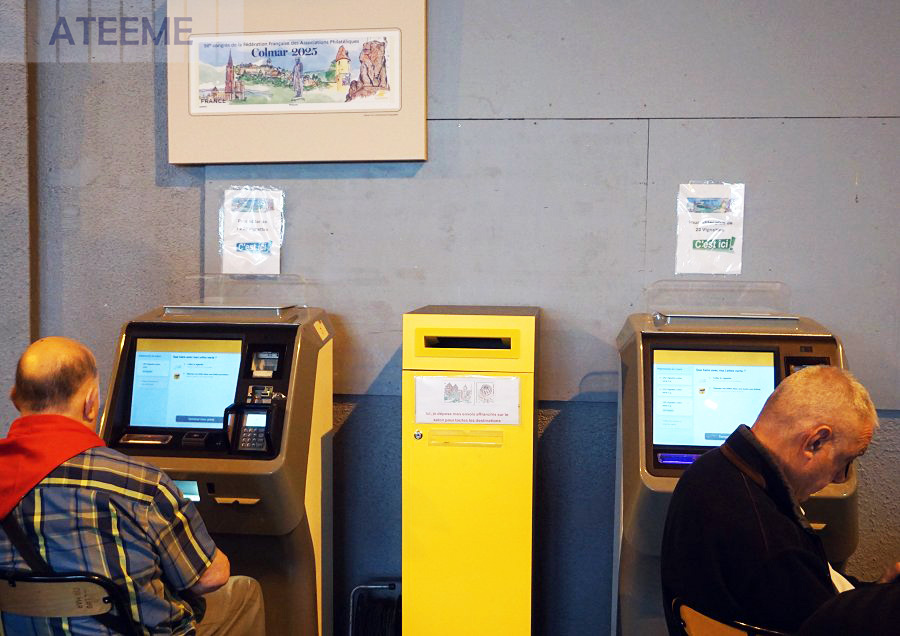
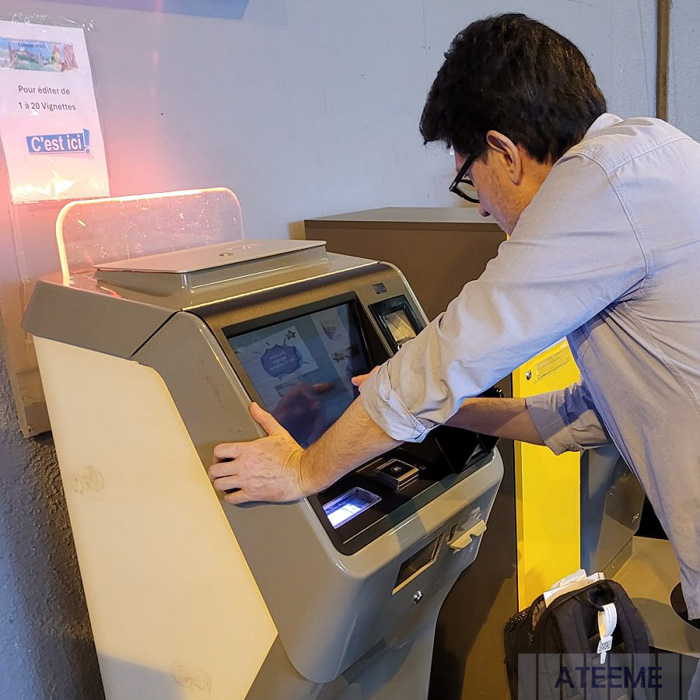
On the first day of the event only stamps for domestic mail “LETTRE VERTE” (prefix “DD”) or international mail “LETTRE INTERNATIONALE” (prefix “IP”) were available from both machines. It was not possible to buy stamps below the programmed minimum value, 1.39€.
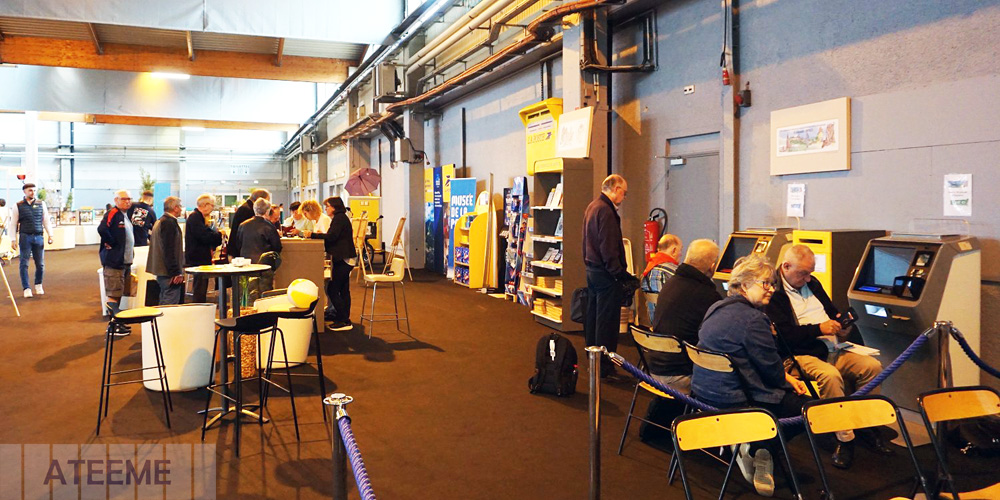
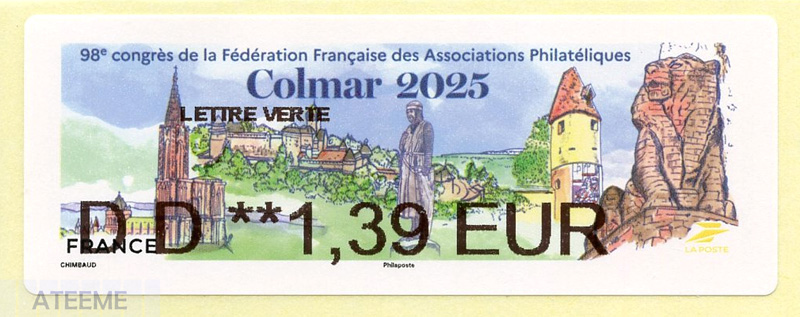
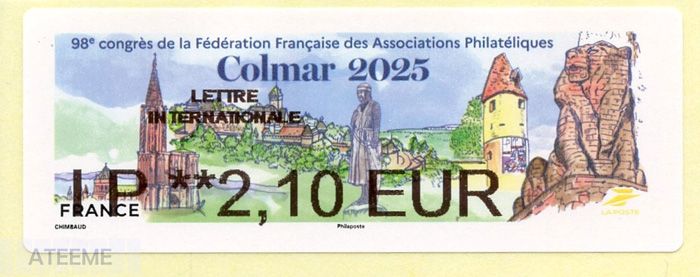
From the second day onwards it was also possible to print stamps for registered mail, “LETTRE RECOMMANDÉE”, but these always with the Datamatrix code.
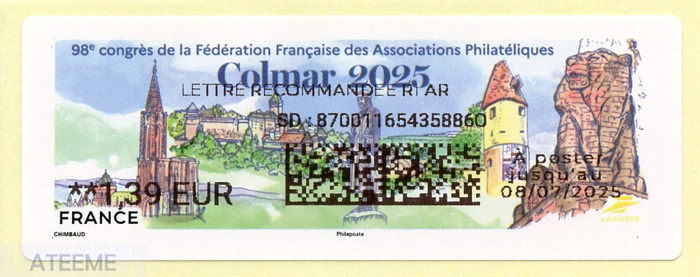
Prior to the event, the organisers had prepared a number of souvenir covers and postcards, with various designs created by the painter Marcel Hemmerlé, with the ‘Colmar’ special stamp and LISA. One of the souvenir cards, depicting the Fontaine Roesselmann, is especially interesting to us. This card includes a vignette LISA and the first 500 LISAs used for these souvenirs were issued, days before the exhibition, from an IER NAT postal kiosk installed in the Colmar Nord branch. These stamps were issued using the regular post office programme, which prints the Datamatrix code on the stamps.
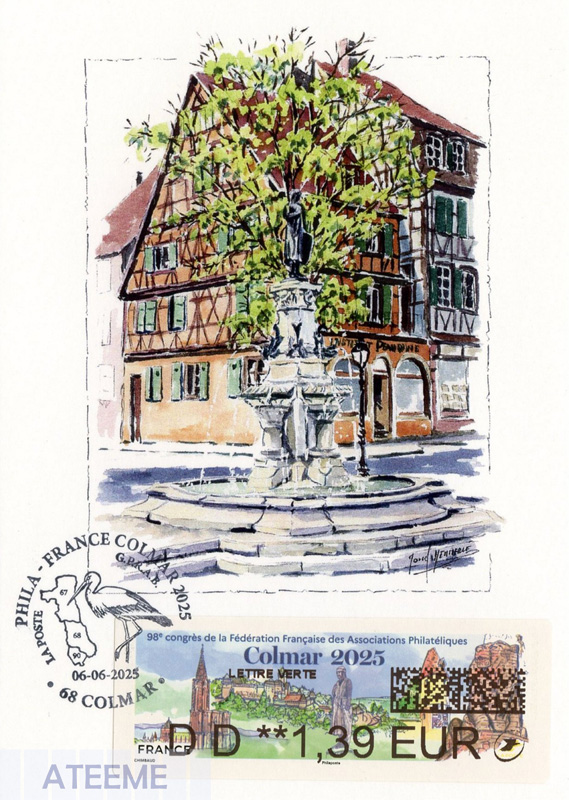
Once the exhibition was over, the managers of the La Poste Colmar Nord post office decided to use the leftover rolls of labels in one of the postal kiosks installed in the office. Unfortunately, with three models of kiosks available, they chose the IER NABUCCO (pictured right), which has poor print quality.
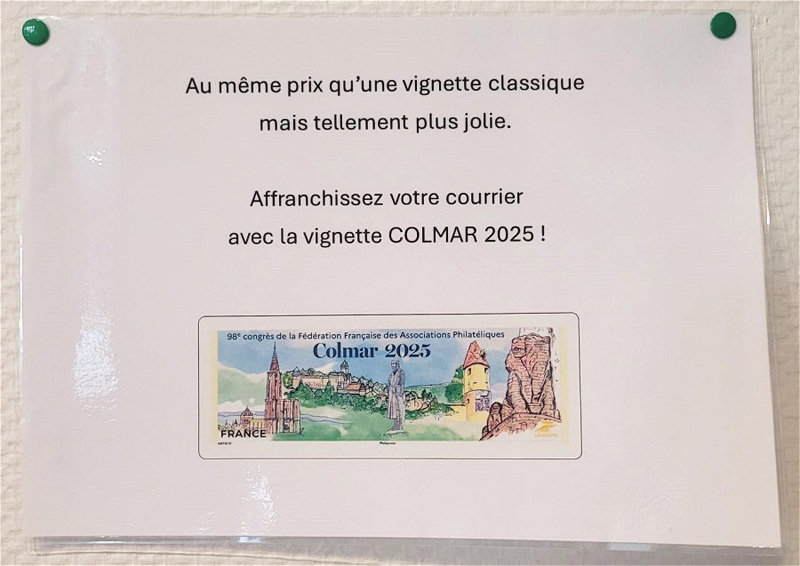
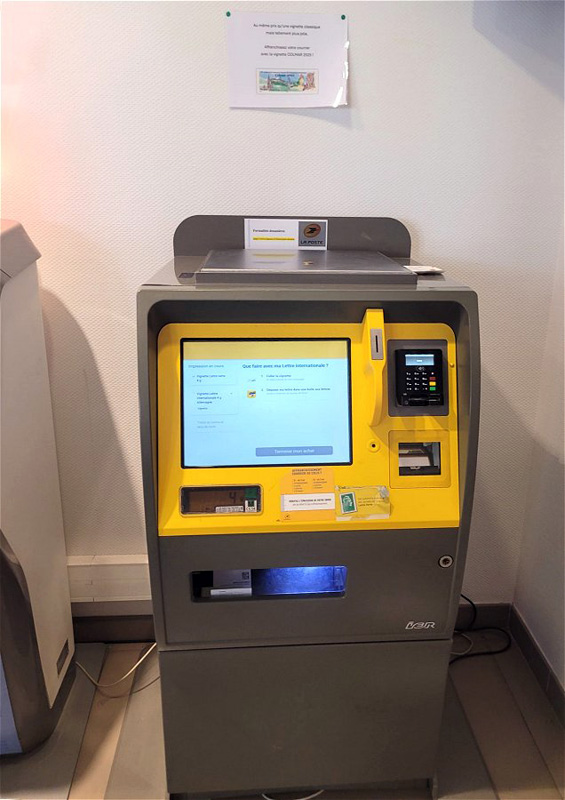
Therefore the stamps issued from this kiosk with the normal tariff programme and no programmed minimum value include the usual Datamatrix code and the La Poste logo in the lower right corner.
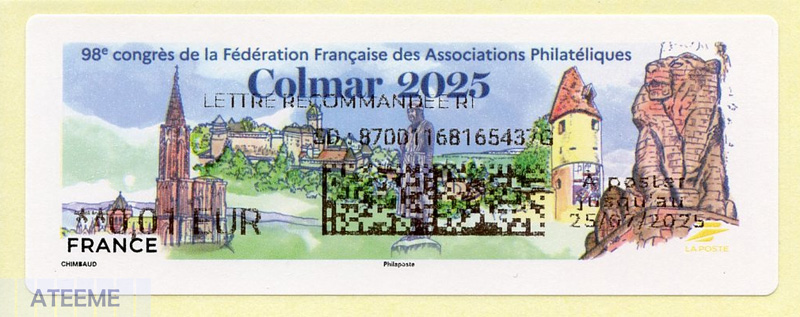
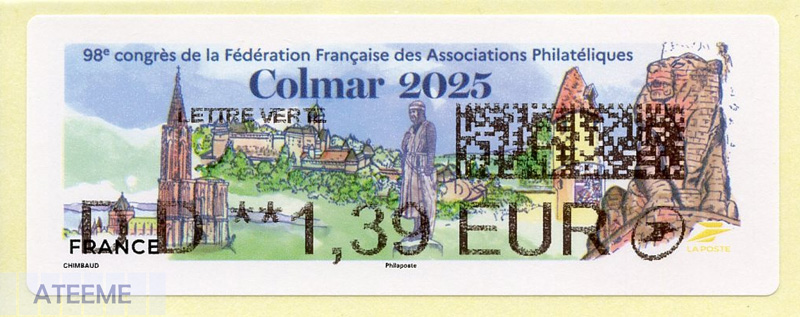
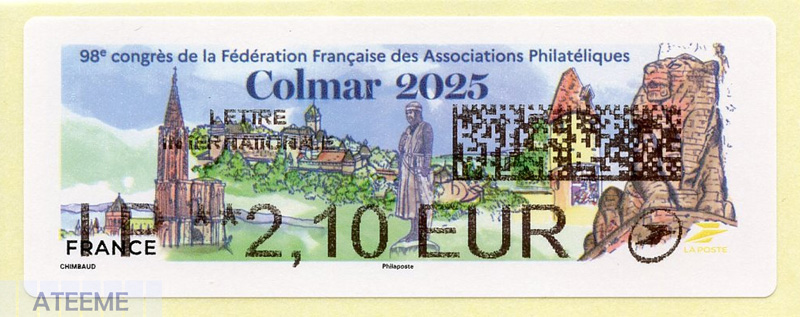
(English edition last rewritten by J. Gareze – July 2025)
Access to this site, and to the website in general, is monitored and its contents are protected by copyright.
The unauthorized copy of the text and / or images is prohibited
